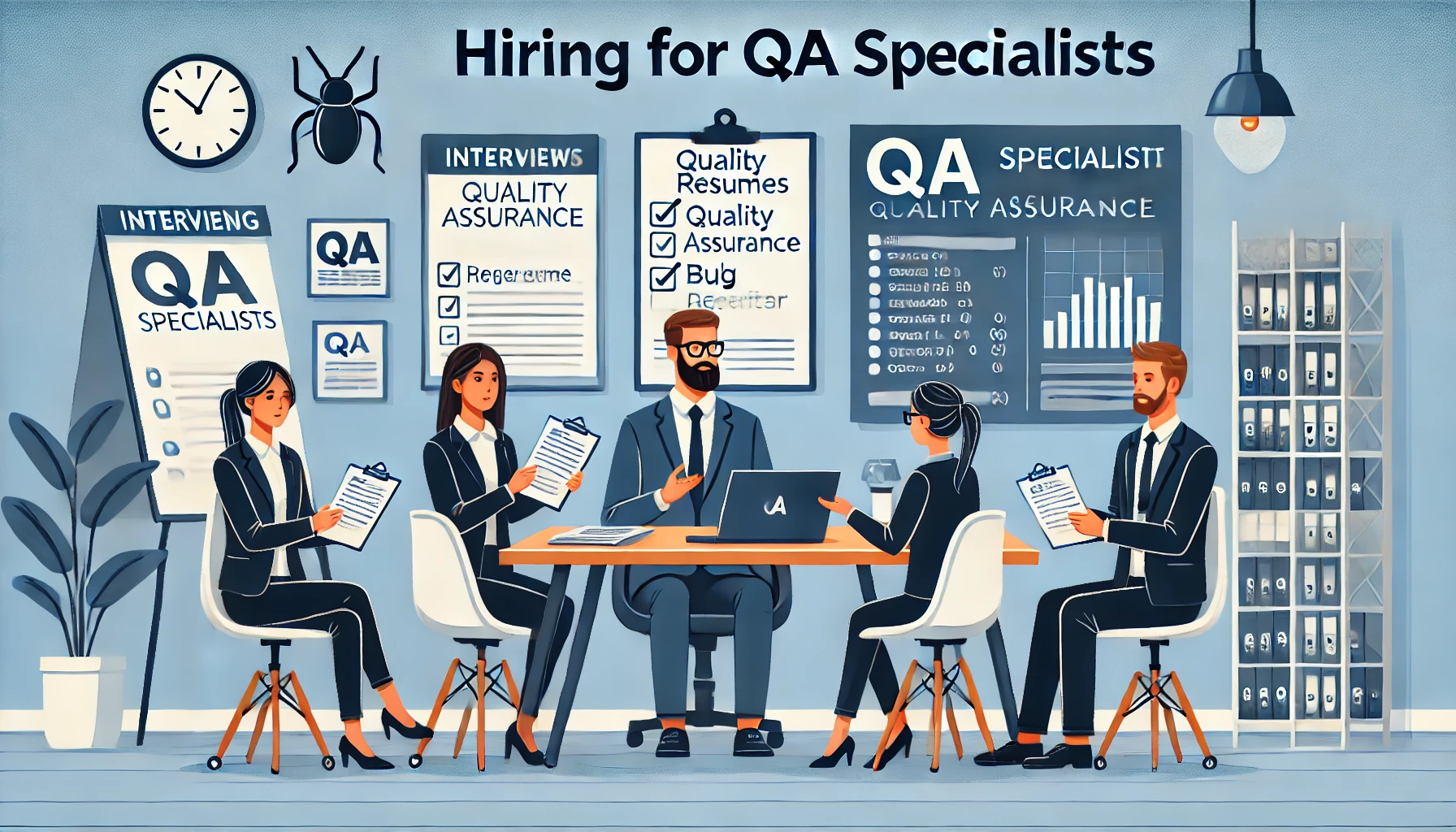Recruiters often face unique challenges when hiring for Quality Assurance (QA) roles. Identifying the right balance of technical skills, problem-solving abilities, and soft skills can be a daunting task. QA professionals must possess a diverse set of competencies, from manual testing expertise to automation proficiency and even software development skills for SDET roles. Evaluating candidates’ adaptability, attention to details, and collaborative nature is crucial, as QA teams often work closely with developers and stakeholders. Striking the right balance between technical prowess and interpersonal skills is key to building a high-performing QA team.
When recruiting for Quality Assurance roles, understanding the distinct responsibilities and skill sets of Manual QA, Automation QA, and SDET positions are crucial. Each role contributes uniquely to the software development lifecycle, ensuring quality and efficiency. Here is a detailed examination of each role for recruiters seeking to fill these positions:
| Aspect | Manual QA | Automation QA | SDET (Software Development Engineer in Test) |
| Role Overview | Focuses on executing test cases manually to identify software defects and ensure expected behavior. | Concentrates on automating test cases to improve efficiency and coverage. | Blends development and testing skills to create robust testing frameworks and tools. |
| Primary Responsibilities | – Execute test cases manually. – Perform exploratory and usability testing. – Document and track bugs. | – Develop and execute automated test scripts. – Integrate automated tests into CI/CD pipelines. – Optimize test efficiency. | – Design and develop complex testing frameworks. – Collaborate with developers on code quality. – Implement TDD/BDD methodologies. |
| Skills Required | – Detail-oriented. – Strong communication for reporting bugs. – Understanding of user perspective. | – Proficiency in scripting and programming. – Experience with automation frameworks and CI tools. | – Extensive programming skills. – Experience with TDD/BDD. – Proficient in test tool development. |
| Approach | Reactive – focuses on finding defects introduced into the software. | Primarily reactive – automates regression to find existing defects. | Proactive – aims to prevent defects by influencing both development and testing processes. |
| Technical Proficiency | Basic technical understanding and ability to execute test cases manually. | Strong technical skills, especially in scripting and using automation tools. | Advanced coding skills and the ability to contribute to codebase and design testing tools. |
| Collaboration | Works closely with developers and product owners to understand requirements and clarify issues. | Collaborates with development teams to ensure test coverage aligns with software changes. | Partners with development teams to enhance both code and test coverage. |
| Career Path | Can advance to QA analyst or QA lead roles. | Opportunities to evolve into senior automation engineer or SDET roles. | Can progress to software architect or quality manager roles. |
| Focus Area | Testing the product from a user’s perspective. | Testing processes, focusing on automating repetitive tasks. | Both development and testing, ensuring high-quality software products. |
These specific skills form the backbone of each role’s responsibilities and are critical for recruiters to evaluate during the hiring process. Focusing on these can help ensure the candidates are well-suited to contributing effectively in their QA position.
Key Points for Recruiters:
- Assessment of Technical Skills: Evaluate candidates based on the specific technical and soft skills relevant to each role. Manual QAs need a keen eye for detail, Automation QAs should have strong scripting abilities, and SDETs must possess advanced programming and development skills.
- Adaptability and Growth Potential: Consider candidates’ capacity for growth and adaptability within the QA team structure. Look for evidence of continuous learning and how well they can adapt to evolving technology needs.
- Cultural Fit and Collaboration: Assess how well candidates can work within a team, especially as QA roles frequently require close collaboration with developers and other stakeholders. Understanding of Agile practices may be beneficial.
- Role Advancement and Contribution: Consider how candidates see their roles within the broader context of product quality and how they plan to contribute beyond their immediate responsibilities.
This comprehensive look allows recruiters to make informed decisions, ensuring they select candidates who not only fit the technical requirements but also align with the company culture and long-term goals.
